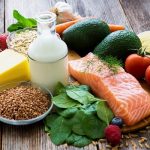There is a slow but steady rise in Australia with 1 in 10 people choosing to follow a vegetarian diet (1). This is likely to follow-on within aged care. A typical vegetarian diet consists of plant-based foods without eating animal products such as meat, poultry and seafood. A vegan diet also excludes eggs and dairy. It is important to respect an individual’s religious, cultural, personal, health-related, environmental or ethical reasons to avoid eating animal foods.
What is a Vegetarian Diet?
There are many types of a vegetarian diet, for example, a resident may describe themselves as vegetarian when they only avoid red meat. For this reason, it is crucial that aged care staff are clarifying with residents and/or families what is meant by ‘vegetarian’ to avoid unnecessarily restricting foods and therefore improving the nutritional quality of the diet and food enjoyment for the resident. Start by documenting and communicating residents’ food preferences to all relevant staff (including kitchen staff) on admission.
The common variations of a vegetarian diet are as follows:
Pescetarian: Doesn’t eat red meat or poultry, but will eat fish, seafood, dairy and eggs.
Ovo-Lacto Vegetarian: Doesn’t eat red meat, poultry or fish but will eat dairy and eggs.
Ovo Vegetarian: Doesn’t eat red meat, poultry, fish or dairy but will still eat eggs.
Lacto Vegetarian: Doesn’t eat red meat, poultry, fish or eggs, but will eat dairy.
Vegan: Doesn’t eat any animal products, including dairy and eggs and sometimes honey. Will eat plant-based foods.
Getting Enough Energy and Protein
Not eating high protein foods, can contribute to further functional decline and deterioration of health in the aging population. While vegetarian diets are varied, they tend to have lower energy and protein contents than meat-containing diets. It is important that meals are served with a protein alternative, rather than just vegetables without the meat. E.g. instead of 100g of beef steak, it should be replaced with 160g of egg quiche. Larger serves of vegetarian ingredients are needed to provide the same protein content of meat. This can be challenging when balancing meal flavours and textures.
Good sources of protein suitable for an ovo-lacto vegetarian include:
eggs
legumes
dairy foods
nuts and seeds
wholegrains and cereals
soy-based products (tofu tempeh, soymilk)
Some residents may choose to only have vegetables for their meal. In this case it is important to honour resident choice, however it would still be worth discussing protein-alternatives that they might enjoy eating. You may choose to involve your dietitian in these discussions with the resident.
Maximise protein intake by including high-protein snacks throughout the day. Examples include protein-containing entrées, desserts and snacks such as lentil soup, yoghurt, cheesecake, baked custard, cheese and biscuits, milkshakes and egg sandwiches.



